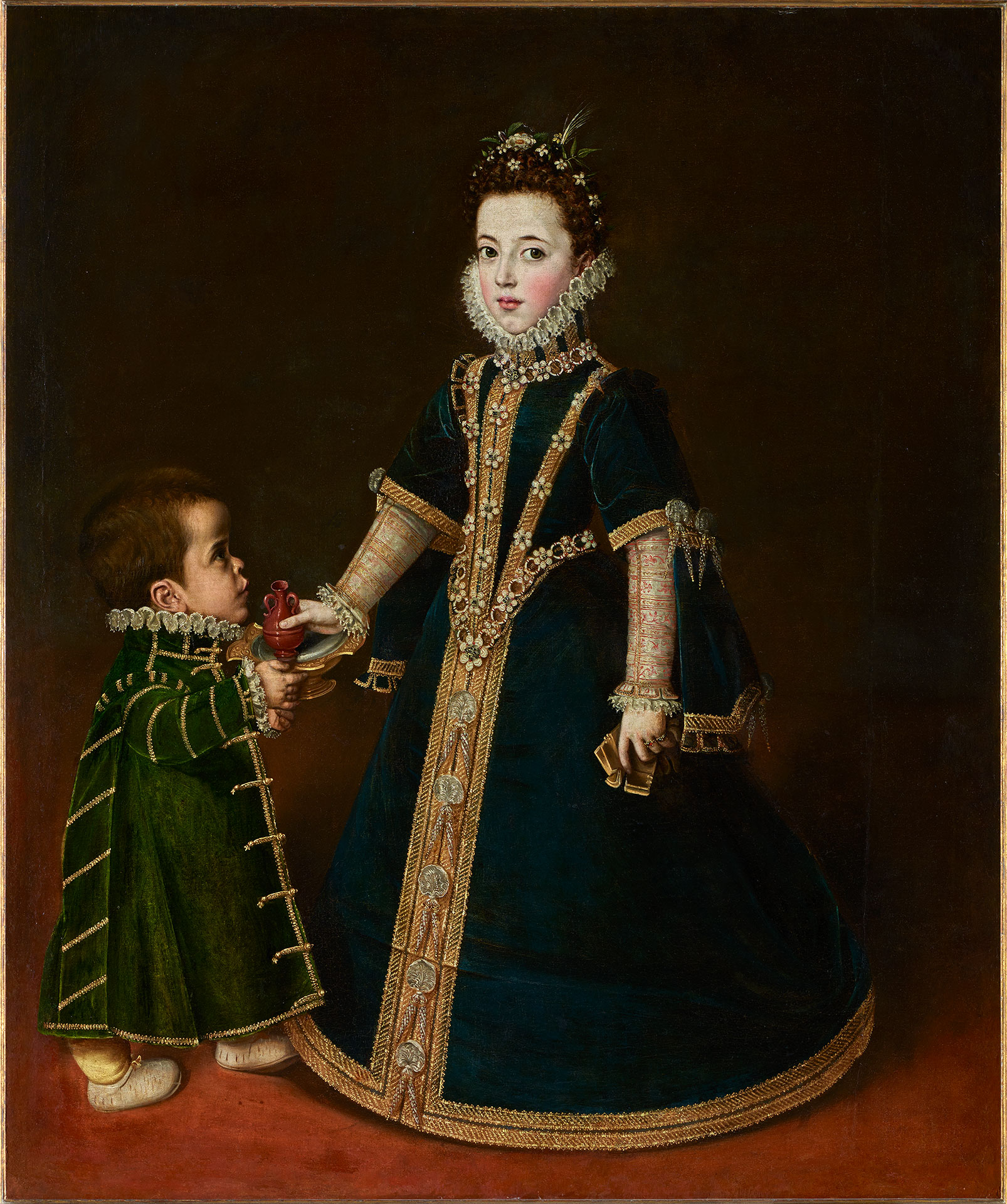
Alonso Sánchez Coello (Benifairó de los Valles, Valencia, circa 1531 – Madrid, 1588)
Doña Juana de Mendoza, Duchess of Béjar, with a Dwarf
Circa 1585
WORK INFORMATION
Oil on canvas, 149 x 125 cm
The attribution of this work to Alonso Sánchez (who later adopted the second surname Coello and was also known as "the Portuguese") is virtually unanimous, and it was listed as such in the 1990 exhibition at the Museo del Prado catalogued by Breuer-Hermann. Sánchez Coello was in Flanders in 1550, in Lisbon in 1552–1555, and in Valladolid in 1560 along with Anthonis Mor, from whom he learned. When the Flemish master left around 1560, Sánchez Coello was appointed court painter to Philip II, although the official record of this appointment has not yet surfaced. He lived in Madrid from 1561, when the king moved the court to that city. Sánchez Coello primarily painted portraits by royal commission (gallery of the Palace of El Pardo) and small portraits, but he also produced canvases with religious themes for altarpieces (Colmenar Viejo and El Espinar) and for the Monastery of El Escorial.
In the inventory of the estate of Don Íñigo López de Mendoza, 5th Duke of the Infantado, drawn up after his death in 1601, we find the following description: "Item, six portraits with their gold frames: two of my lord duke and another of my lady duchess, another of Don Rodrigo de Mendoza, another of my lady duchess Doña Ana, another of my lady Doña Juana, Duchess of Béjar, with the dwarf." This last work passed into the hands of the noble House of Osuna and later, after its sale in 1896, went to the Duke of Montellano. Banco Santander purchased it in 2013 from the Marquess of Griñón.
Doña Juana (1580–1641) was the daughter of Don Íñigo and Doña Luisa Enríquez de Cabrera, whose father was the Admiral of Castile. She was not a duchess at the time this portrait was painted; that title came later, when she married the 6th Duke of Béjar (1578–1619), Grandee of Spain, Knight of the Order of the Golden Fleece and patron of Cervantes, who dedicated the first part of Don Quixote to him in 1605. After being widowed, she became a nun at the convent of Discalced Carmelites in Écija and took the name Joanna of the Holy Trinity.
In the portrait, the girl wears a full surcoat with rounded sleeves embellished with metal points, from which long foresleeves emerge; the high ruff partly covers her ear, and she holds a glove in her left hand. Her hair, belt and buttons are studded with pearls and precious stones. The general impression is that of a girl dressed up like a grown woman. The bareheaded dwarf, clad in a cassock, ruff and boots, is offering his mistress a red clay jug, which she has grasped with her right hand, on a partly gilded silver salver with a foot and a flaring scooped rim.
The painting was primed with white lead and a bit of organic black and vermilion, and the details were painted over this layer with a fine brush. The height is that normally used for child portraits, but the width was increased to make room for the second figure.
The formal characteristics are derived from the portraits of Titian and Mor: a dark, shadowless ground and painstaking attention to the garments, which seem to immobilise the subjects. The addition of a secondary figure to reinforce the triangular composition defined by the girl, immediately drawing the viewer's attention to the dwarf, is uncommon but not unheard-of. The tray and jug obviously foreshadow the service we see being handed to the Infanta Margarita in Las Meninas. The composition emphasises the principal figure as she looks away from the servant, whose distinctive features—forehead, stature, feet, etc.—are portrayed realistically but without ridicule. In contrast, the girl seems impassive and utterly serene, as befits her exalted social status. [José Manuel Cruz Valdovinos]

